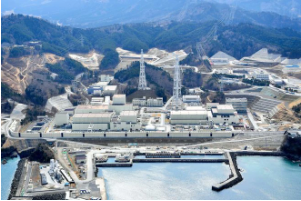
"It cannot be assumed that a specific danger of an accident exists that will lead to the abnormal release of radioactive materials," said Presiding Judge Mitsuhiro Saito. Given the uncertainty over the potential danger, he said he saw no need to take into account the effectiveness of evacuation plans are effective in handing down his decision.
The lawsuit was filed by 17 residents of the city of Ishinomaki. They argued that the evacuation plans prepared by the city and prefectural governments were inadequate. If an evacuation order were issued following a nuclear accident, residents would be unable to escape a 30-kilometre radius of the plant for an extended period due to traffic congestion, they argued.
They also said the traffic situation would make it unlikely that utility and local government officials would be able to establish an inspection site for Ishinomaki residents to test whether they have been contaminated with radiation before they left for evacuation centres outside the 30km zone.
Tohoku Electric sought to dismiss the lawsuit on the basis that emergency responses, including the evacuation plans, had been approved by the country's nuclear disaster prevention council. Following the ruling, the utility said it remains committed to pursuing the restart of the reactor in February 2024 as planned. "The court acknowledged our claim," the company said in a statement. "We will continue to cooperate as much as possible to improve the effectiveness of the evacuation plans."
Before the accident at Fukushima Daiichi, nuclear energy accounted for about 30% of Japan's energy balance. Following the earthquake and tsunami which caused the accident, Japan closed all 54 of its nuclear power units and introduced more stringent safety requirements for their restart. Of the 33 currently considered to be operable, 10 have so far been restarted.